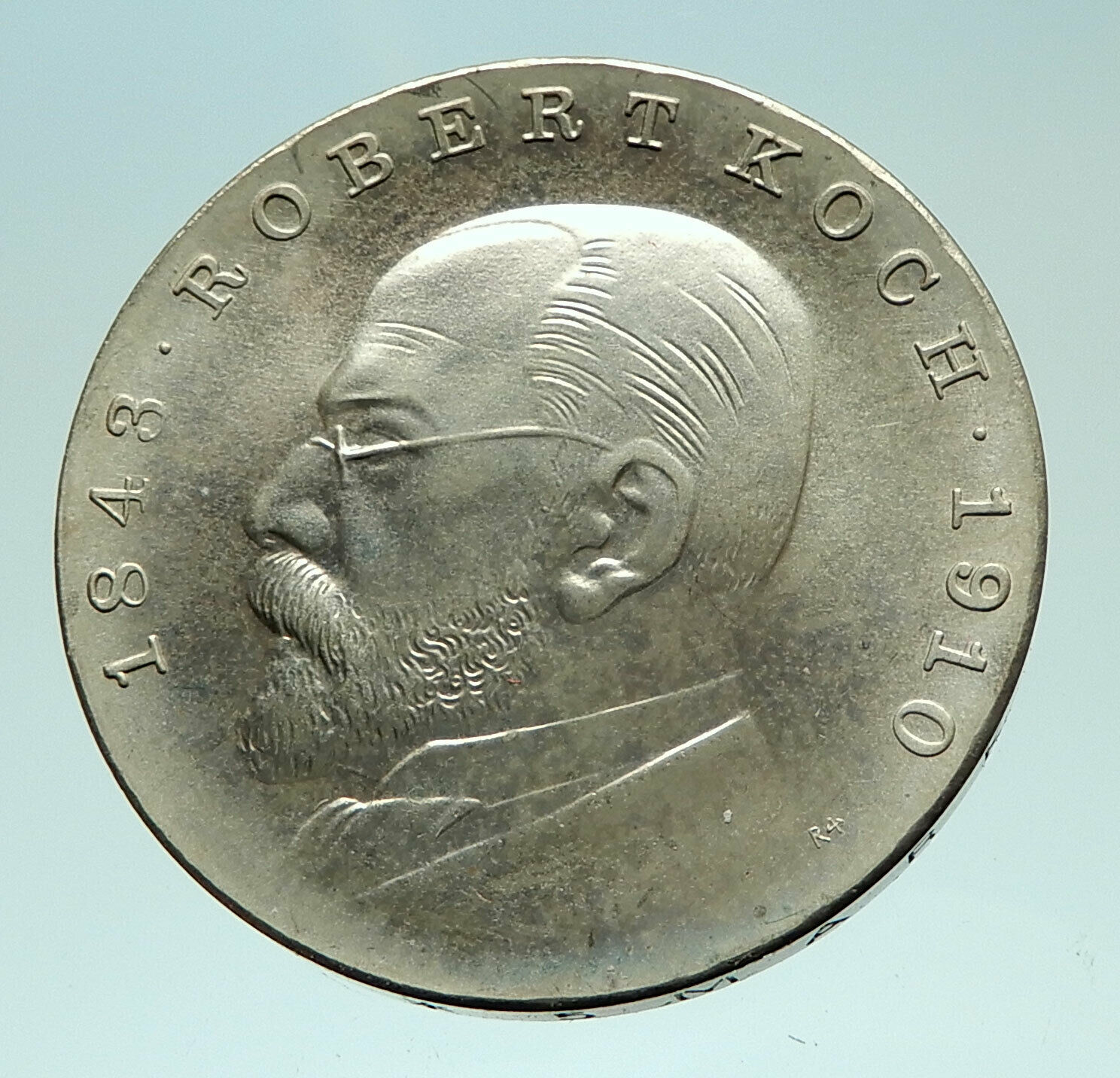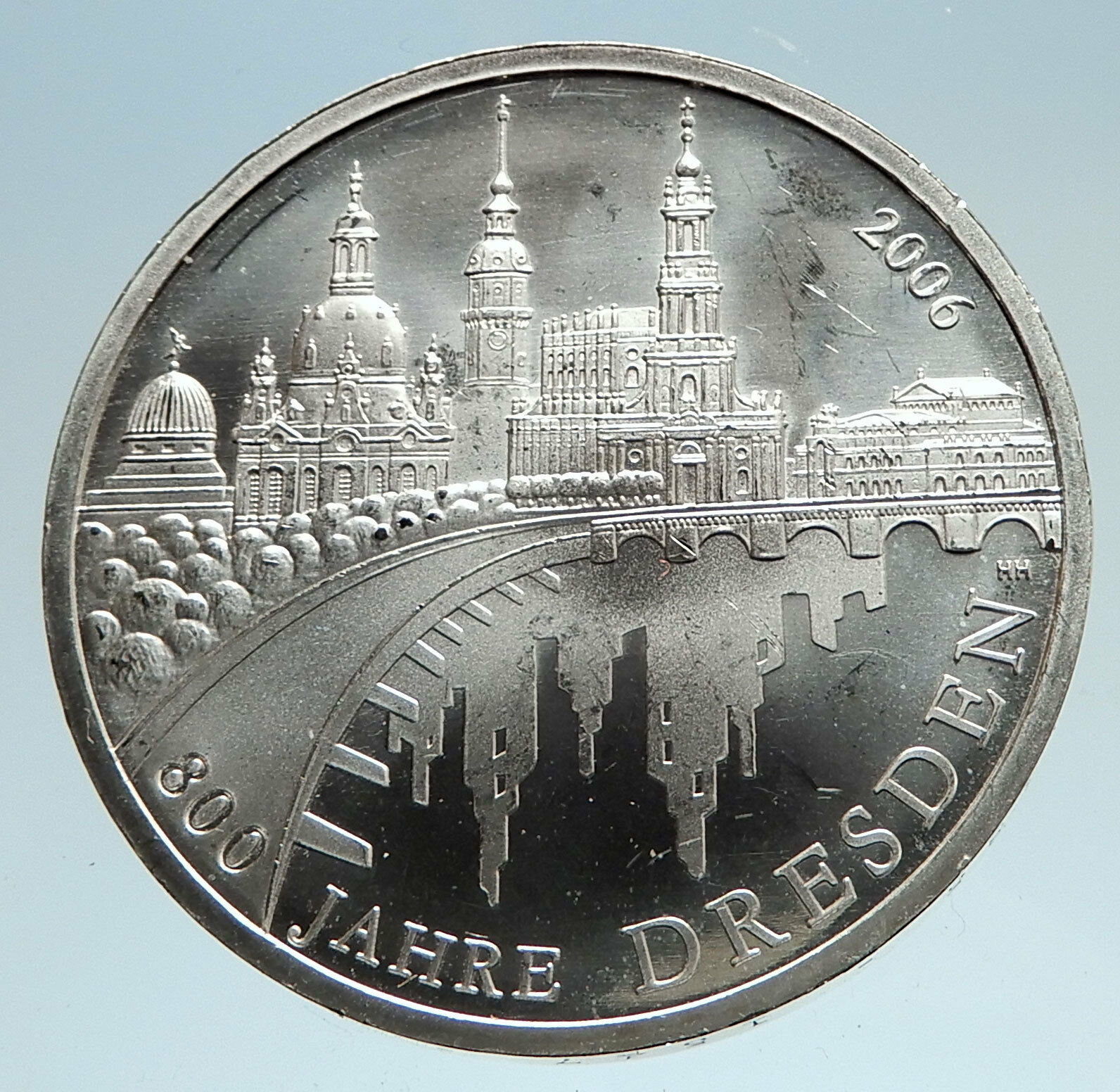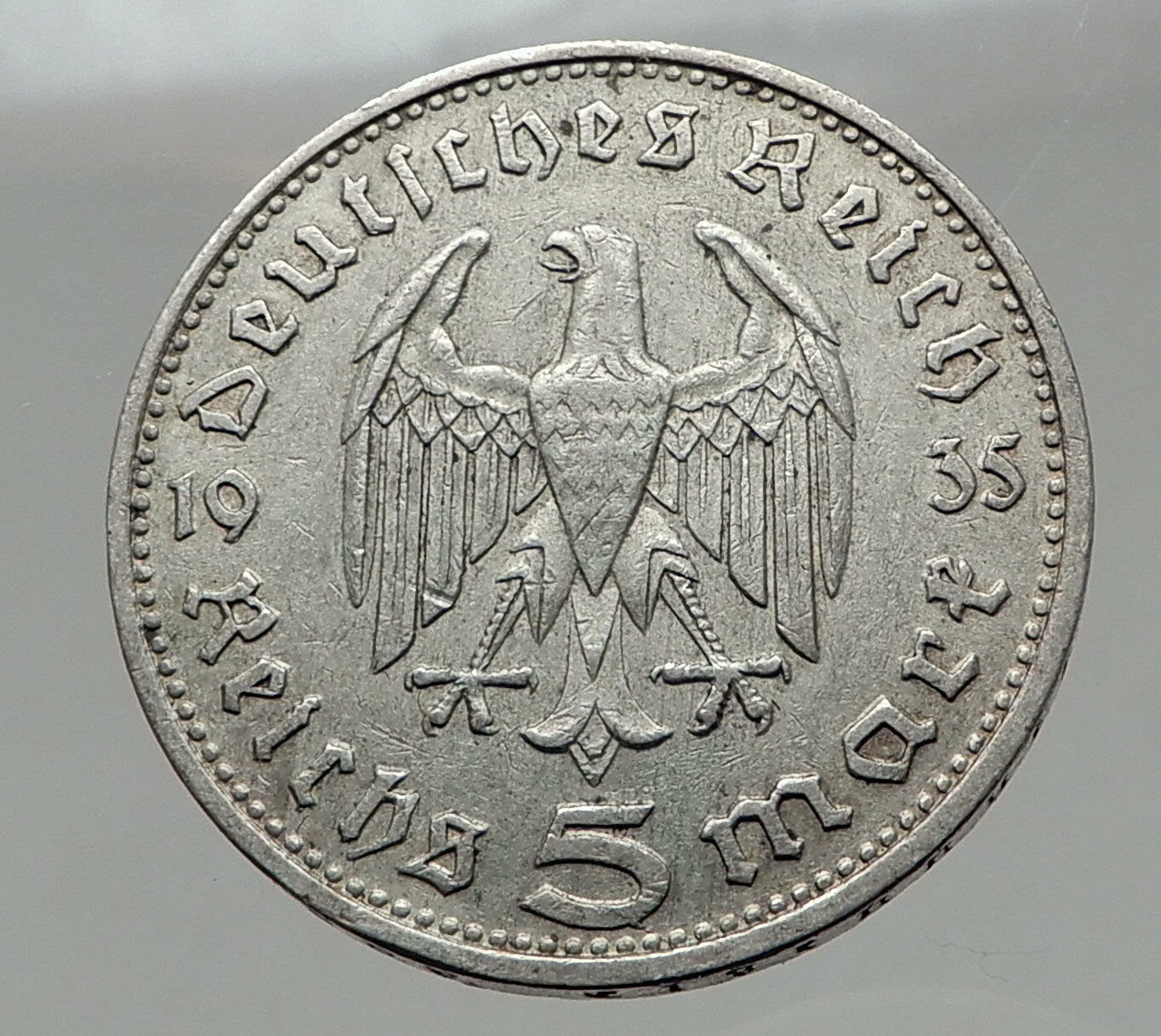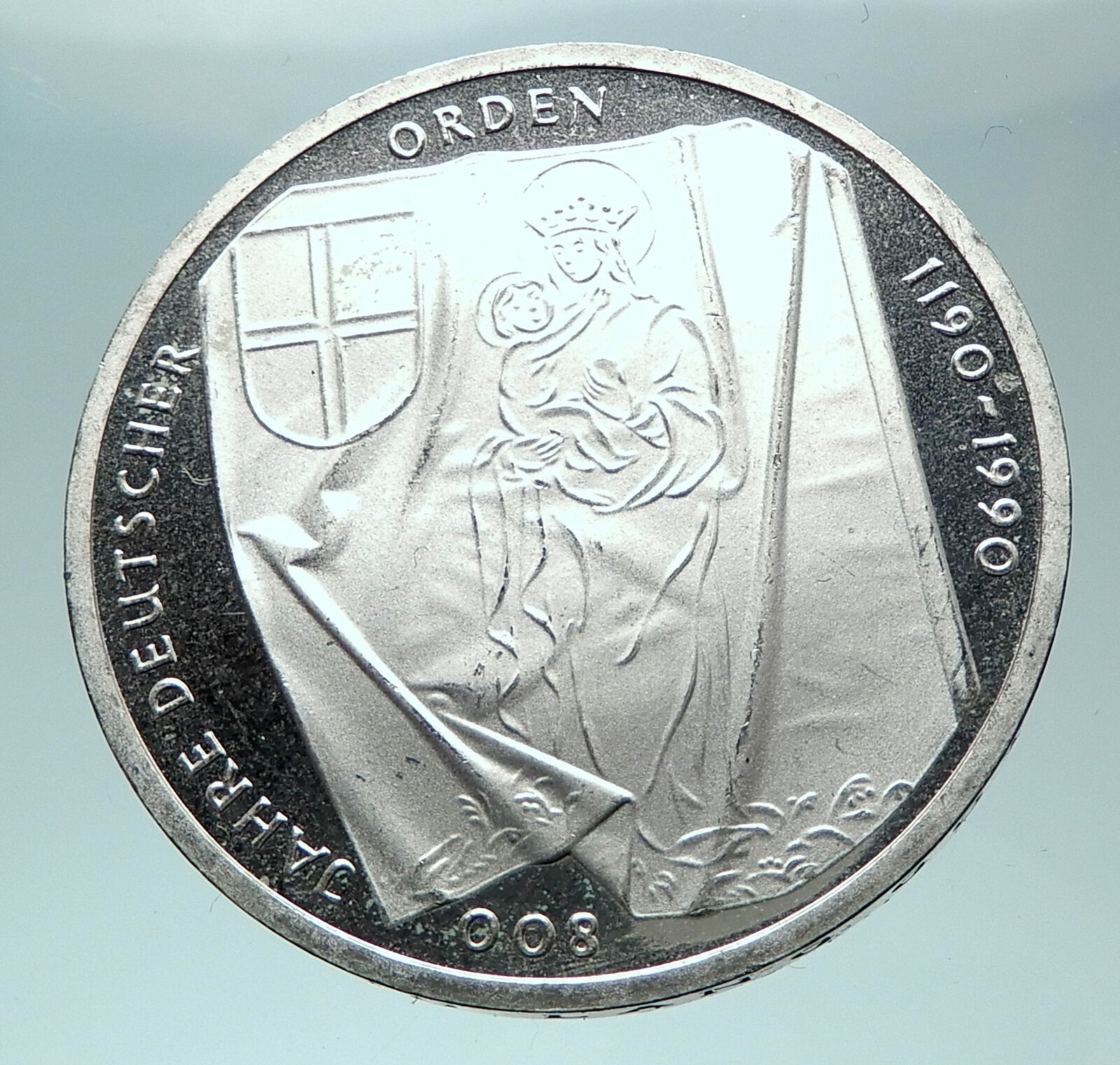|
Germany -150th Anniversary – Birth of Max von Pettenkofer
1968 D Silver 5 Mark 29mm (11.15 grams) 0.625 Silver (0.2251 oz. ASW)
Reference: KM# 123
· DEUTSCHE MARK · BUNDESREPUBLIK DEUTSCHLAND 5 19 68 D, Stylized eagle.
MAX · V · PETTENKOFER · 1818 – 1901, Max facing 3/4 left.
Edge Lettering:
HYGIENE STREBT, DER ÜBEL WURZEL AUSZUROTTEN
You are bidding on the exact item pictured, provided with a Certificate of Authenticity and Lifetime Guarantee of Authenticity.
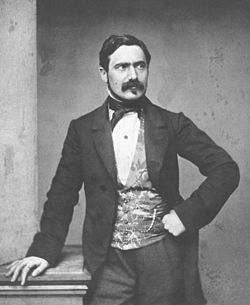 Max Joseph Pettenkofer, ennobled in 1883 as Max Joseph von Pettenkofer (3 December 1818 – 10 February 1901) was a Bavarian chemist and hygienist. He is known for his work in practical hygiene, as an apostle of good water, fresh air and proper sewage disposal. He was further known as an anticontagionist, a school of thought, named later on, that did not believe in the, at the time novel concept, that bacteria were the main cause of disease. In particular he argued in favor of a variety of conditions collectively contributing to the incidence of disease including: personal state of health, the fermentation of environmental ground water, and also the germ in question. He was most well known for his establishment of hygiene as an experimental science and also was a strong proponent for the founding of hygiene institutes in Germany. His work served as an example which other institutes around the world emulated. Max Joseph Pettenkofer, ennobled in 1883 as Max Joseph von Pettenkofer (3 December 1818 – 10 February 1901) was a Bavarian chemist and hygienist. He is known for his work in practical hygiene, as an apostle of good water, fresh air and proper sewage disposal. He was further known as an anticontagionist, a school of thought, named later on, that did not believe in the, at the time novel concept, that bacteria were the main cause of disease. In particular he argued in favor of a variety of conditions collectively contributing to the incidence of disease including: personal state of health, the fermentation of environmental ground water, and also the germ in question. He was most well known for his establishment of hygiene as an experimental science and also was a strong proponent for the founding of hygiene institutes in Germany. His work served as an example which other institutes around the world emulated.
Early life and education
Pettenkofer was born in Lichtenheim, near Neuburg an der Donau, now part of Weichering. He was a nephew of Franz Xaver (1783-1850), who from 1823 was a surgeon and apothecary to the Bavarian court and was the author of some chemical investigations on the vegetable alkaloids. After a falling out with a relative he was staying with he briefly entered the theater.[3] He returned to his family to marry Helene Pettenkofer. A stipulation of his marriage was that he pursue another career and was advised to pursue medicine.[3] He attended the Wilhelmsgymnasium, in Munich, then studied pharmacy and medicine at the Ludwig Maximilian University, where he graduated M.D. in 1845.
Career as chemist
After working under Liebig at Gießen, Pettenkofer was appointed chemist to the Munich mint in 1845. Two years later he was chosen as an extraordinary professor of chemistry at the medical faculty. In 1853 he was made a full professor and in 1865 he also became a professor of hygiene. In his earlier years he devoted himself to chemistry, both theoretical and applied, publishing papers on a wide range of topics. One of his first projects and subsequent publications was in the separation of gold, silver, and platinum. This work derived from his position at the Munich mint and was centered around minimizing the costs of currency conversion by separating the precious metals from one another. The purer elements could then be utilized in other applications. Later in his career he continued published and spoke about the numerical relations between the atomic masses of analogous elements. His theories were early in the development of the Periodic Table. He rejected the current theory of triads and expanded the connections between the elements to larger groupings. He argued that the weights of different elements in a group were separated by multiples of a certain number that varied based upon the group. His work in this area was later cited by Dmitri Mendeleev in his construction of the Periodic Table of Elements. He continued his publications in a wide variety of other fields as well including: the formation of aventurine glass, the manufacture of illuminating gas from wood, the preservation of oil paintings, and an improved process for cement production among other things. The color-forming reaction known by his name for the detection of bile acids was published in 1844. In his widely used method for the quantitative determination of carbonic acid the gaseous mixture is shaken up with baryta or limewater of known strength and the change in alkalinity ascertained by means of oxalic acid. He further provided the experimental proof that the mysterious haematinum of ancient times was in fact a copper-colored glass.
Career as hygienist
Pettenkofer’s name is most familiar in connection with his work in practical hygiene, as an apostle of good water, fresh air and proper sewage disposal. His attention was drawn to this subject by the unhealthy condition in Munich in the 19th century. Specifically he examined the field of hygiene and determined that there was a minimal amount of rigorous research. He was responsible for transitioning the field of hygiene into a research-oriented field. He is further responsible for the acceptance of hygiene as a science to be examined in medical schools and to be taught in specific hygiene departments. In 1865 his petitions to the government were accepted and three departments of hygiene were established in Munich, Würzburg, and Erlangen. By 1882 hygiene was included in examinations for medical students in every major city of Germany. As one of the principal proponents for the field of hygiene in Munich he was responsible for giving presentations to government officials in order to secure funding for public health projects.
One of the prevailing arguments of the day that Pettenkofer focused on was the relationship between sewage and the health of a population. In one of his first major projects in his home city of Munich Pettenkofer advocated for the development of running water throughout the city. He also emphasized the selection of the Mangfall River, not the readily at hand and highly polluted Isar River, as the source of the city’s drinking water. Many of his additions and plans for the city’s sewage system are reflected today in the current sewage system layout.
During his schooling he studied for a time under Justus von Liebig where he applied his study of chemistry to the study of chemical reactions occurring within the body. This in particular focused on the study of the science of nutrition and the reactions in the body that consumed foods and produced the processes of the body. He further advocated for reform of the food production system used in Munich. He argued that the system for the study of proper cattle feed was more well developed than that for humans and recommended civic funding for studying proper nutrition. He proposed that this study of nutrition was important specifically for the poor and those in strictly controlled environments such as prison because they were most at risk for obtaining sub-par nutrition due to their limited control over their food consumption.
He further advocated for the construction of more spacious living accommodations. He asserted that there was a strong link between proper circulation of “good air” through houses, adequate space for living, and the health of the occupants. His beliefs aligned significantly with the school of thought known as the Miasma theory. He firmly believed that the causes of disease were related to the multitude of environmental factors that the people of Munich were required to live in. Air was of a particular interest to him and he continued to advocate for its relevance to the processes of disease, specifically the spread of cholera. He was also a strong proponent of regular bathing and changing of clothes in its relationship to health through the further regulation of the heat of the body. He advocated that health was the collective responsibility of a city to behave as best they are able to further the health of the general population.
In addition to the wide number of publications and lectures that he gave on the subject of public health Pettenkofer was also involved in the initiative to create an Institute of Public Health in Munich. He continued research into a variety of fields listed above as head of the Institute of Physiology in Munich from 1857 onwards. After numerous successful audiences with two of the kings of Bavaria he had helped found the first three hygiene departments. In 1879 he finally achieved his goal of the creation of a standalone Institute of Hygiene in Munich. This institution was larger than his previous accommodations in the department of Physiology and allowed him to continue to his research and to gather a large cohort of research students under his teachings. The founding of his Institute of Hygiene drew significant international attention and was considered a model for many later institutions including the Johns Hopkins School of Hygiene and Public Health in Baltimore.
During his career his position as a strong proponent of public health at times placed him at odds with his contemporaries, most notably Robert Koch. During his career Koch identified and isolated a large number of bacterial strains and was a supporter of the theory that these germs were the main causes of disease. This placed him at odds with Pettenkofer’s broader approach to disease that involved many other environmental factors in addition to the activity of the germ of a disease. The two scientists conflicted most notably over the subject of cholera. In one specific case, Pettenkofer obtained bouillon laced with a large dose of Vibrio cholerae bacteria from Robert Koch, the proponent of the theory that the bacteria was the sole cause of the disease. He consumed the bouillon in a self-test in the presence of several witnesses on 7 October 1892. He also took bicarbonate of soda to neutralise his stomach acid to counter a suggestion by Koch that the acid could kill the bacteria. Pettenkofer suffered mild symptoms for nearly a week but claimed these were not associated with cholera. The modern view is that he did indeed have cholera, but was lucky to just have a mild case and he possibly had some immunity from a previous episode.
 Germany, officially the Federal Republic of Germany is a federal parliamentary republic in western-central Europe. It includes 16 constituent states and covers an area of 357,021 square kilometres (137,847 sq mi) with a largely temperate seasonal climate. Its capital and largest city is Berlin. With 81 million inhabitants, Germany is the most populous member state in the European Union. After the United States, it is the second most popular migration destination in the world. Germany, officially the Federal Republic of Germany is a federal parliamentary republic in western-central Europe. It includes 16 constituent states and covers an area of 357,021 square kilometres (137,847 sq mi) with a largely temperate seasonal climate. Its capital and largest city is Berlin. With 81 million inhabitants, Germany is the most populous member state in the European Union. After the United States, it is the second most popular migration destination in the world.
 Various Germanic tribes have occupied northern Germany since classical antiquity. A region named Germania was documented before 100 CE. During the Migration Period the Germanic tribes expanded southward. Beginning in the 10th century, German territories formed a central part of the Holy Roman Empire. During the 16th century, northern German regions became the centre of the Protestant Reformation. Various Germanic tribes have occupied northern Germany since classical antiquity. A region named Germania was documented before 100 CE. During the Migration Period the Germanic tribes expanded southward. Beginning in the 10th century, German territories formed a central part of the Holy Roman Empire. During the 16th century, northern German regions became the centre of the Protestant Reformation.
 The rise of Pan-Germanism inside the German Confederation resulted in the unification of most of the German states in 1871 into the Prussian-dominated German Empire. After World War I and the German Revolution of 1918-1919, the Empire was replaced by the parliamentary Weimar Republic. The establishment of the Third Reich in 1933 led to World War II and the Holocaust. After 1945, Germany split into two states, East Germany and West Germany. In 1990, the country was reunified. The rise of Pan-Germanism inside the German Confederation resulted in the unification of most of the German states in 1871 into the Prussian-dominated German Empire. After World War I and the German Revolution of 1918-1919, the Empire was replaced by the parliamentary Weimar Republic. The establishment of the Third Reich in 1933 led to World War II and the Holocaust. After 1945, Germany split into two states, East Germany and West Germany. In 1990, the country was reunified.
In the 21st century, Germany is a great power and has the world’s fourth-largest economy by nominal GDP, as well as the fifth-largest by PPP. As a global leader in several industrial and technological sectors, it is both the world’s third-largest exporter and importer of goods. Germany is a developed country with a very high standard of living sustained by a skilled and productive society. It upholds a social security and universal health care system, environmental protection and a tuition free university education.
Germany was a founding member of the European Union in 1993. It is part of the Schengen Area, and became a co-founder of the Eurozone in 1999. Germany is a member of the United Nations, NATO, the G8, the G20, and the OECD. The national military expenditure is the 9th highest in the world. Known for its rich cultural history, Germany has been continuously the home of influential artists, philosophers, musicians, sportsmen, entrepreneurs, scientists and inventors.
|





 Max Joseph Pettenkofer, ennobled in 1883 as Max Joseph von Pettenkofer (3 December 1818 – 10 February 1901) was a Bavarian chemist and hygienist. He is known for his work in practical hygiene, as an apostle of good water, fresh air and proper sewage disposal. He was further known as an anticontagionist, a school of thought, named later on, that did not believe in the, at the time novel concept, that bacteria were the main cause of disease. In particular he argued in favor of a variety of conditions collectively contributing to the incidence of disease including: personal state of health, the fermentation of environmental ground water, and also the germ in question. He was most well known for his establishment of hygiene as an experimental science and also was a strong proponent for the founding of hygiene institutes in Germany. His work served as an example which other institutes around the world emulated.
Max Joseph Pettenkofer, ennobled in 1883 as Max Joseph von Pettenkofer (3 December 1818 – 10 February 1901) was a Bavarian chemist and hygienist. He is known for his work in practical hygiene, as an apostle of good water, fresh air and proper sewage disposal. He was further known as an anticontagionist, a school of thought, named later on, that did not believe in the, at the time novel concept, that bacteria were the main cause of disease. In particular he argued in favor of a variety of conditions collectively contributing to the incidence of disease including: personal state of health, the fermentation of environmental ground water, and also the germ in question. He was most well known for his establishment of hygiene as an experimental science and also was a strong proponent for the founding of hygiene institutes in Germany. His work served as an example which other institutes around the world emulated. Germany, officially the Federal Republic of Germany is a federal parliamentary republic in western-central Europe. It includes 16 constituent states and covers an area of 357,021 square kilometres (137,847 sq mi) with a largely temperate seasonal climate. Its capital and largest city is Berlin. With 81 million inhabitants, Germany is the most populous member state in the European Union. After the United States, it is the second most popular migration destination in the world.
Germany, officially the Federal Republic of Germany is a federal parliamentary republic in western-central Europe. It includes 16 constituent states and covers an area of 357,021 square kilometres (137,847 sq mi) with a largely temperate seasonal climate. Its capital and largest city is Berlin. With 81 million inhabitants, Germany is the most populous member state in the European Union. After the United States, it is the second most popular migration destination in the world. Various Germanic tribes have occupied northern Germany since classical antiquity. A region named Germania was documented before 100 CE. During the Migration Period the Germanic tribes expanded southward. Beginning in the 10th century, German territories formed a central part of the Holy Roman Empire. During the 16th century, northern German regions became the centre of the Protestant Reformation.
Various Germanic tribes have occupied northern Germany since classical antiquity. A region named Germania was documented before 100 CE. During the Migration Period the Germanic tribes expanded southward. Beginning in the 10th century, German territories formed a central part of the Holy Roman Empire. During the 16th century, northern German regions became the centre of the Protestant Reformation. The rise of Pan-Germanism inside the German Confederation resulted in the unification of most of the German states in 1871 into the Prussian-dominated German Empire. After World War I and the German Revolution of 1918-1919, the Empire was replaced by the parliamentary Weimar Republic. The establishment of the Third Reich in 1933 led to World War II and the Holocaust. After 1945, Germany split into two states, East Germany and West Germany. In 1990, the country was reunified.
The rise of Pan-Germanism inside the German Confederation resulted in the unification of most of the German states in 1871 into the Prussian-dominated German Empire. After World War I and the German Revolution of 1918-1919, the Empire was replaced by the parliamentary Weimar Republic. The establishment of the Third Reich in 1933 led to World War II and the Holocaust. After 1945, Germany split into two states, East Germany and West Germany. In 1990, the country was reunified.

